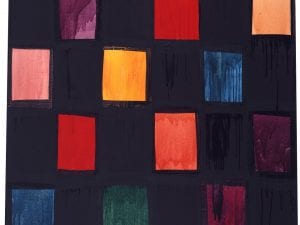Widely acclaimed as a central figure of the Bloomsbury Group, the modernist painter, Vanessa Bell (1879-1961) was a pivotal player in 20th century British art, inventing a new language of visual expression. Dulwich Picture Gallery, London, seek to illuminate the life of such an influential figure. Sarah Milroy discusses the relevance of the figure in today’s industry.
A: As one of the prominent members of the Bloomsbury Group, and sister to Virginia Woolf, how do you think her works invented a new language despite what was going on around her?
SM: I think what is distinctive about her style is its informality, and its down to earth quality. Very scruffy, vigorous application of paint in her best period in the teens, with a lot of exuberant physical energy on display. Her assertion colour is of a piece with her radical nature — renouncing the dark colours and sobriety of the Victorian era. It meant freedom to her.
A: Why do you think the portraits, still life and landscape works are still particularly relevant in today’s society of digitalisation and globalisation?
SM: I think that Bell’s work is remarkable for its sense of touch, the warmth and sensuality of how she saw the world and how she put paint on canvas, or on paper. They are pictures of wet life, nothing cerebral or disembodied about them! It is remarkable, also, in how her pictures embrace, in their subjects, the vernacular cultures of Europe — handmade Italian, Spanish, French and Turkish pottery, carpets, textiles etc. In a sense, she can be seen to be transcending the “island mentality” of England, reaching out to other cultures — their colours and textures — and of course to French avant-garde painting of the day that was going on in Paris, as well as developments in other parts of the Continent.
A: How do you think that context plays a part in this exhibition, and indeed in the life of the artist? Is it important to note or do you think the artwork stands on its own regardless of the identity of its creator?
SM: It is always impossible to fully disentangle an artist’s practice from their life, because the two realms are integral to each other. But Bell made art the same way she lived: passionately and in defiance of received opinions and propriety. But it can also be appreciated outside of that context. When we place her collections alongside those of her British contemporaries, it becomes quite clear that she was one of the boldest modernist innovators of her generation — both in how she tackled the problems of representation and in the handling of certain subjects — for example the monumental paintings of women.
A: How does the collection see a shift from Impressionism to experimentalism?
SM: Bell made the move from Post Impressionism to Cubism, experimenting with abstraction in and around 1914 (following a trip to Paris, when she met Picasso in the company of Gertrude Stein), but she quickly returned to the representational painting of the world around her, albeit in a very stylized way. Our exhibition does not map that movement, as we have not done a chronological hang, but there are some places in this show, such as her two versions of Molly MacCathy, where you can see her moving between modes with great apparent ease and mastery. People forget how well educated she was, and how conversant she was both with art history but also with the other works being created in that time. She shared these interests with her husband, Clive Bell, and with the critic Roger Fry, though she was just as influential to them. This is the correction to the historical record that we have been able to make.
A: How did the artist make use of the technologies of her time?
SM: Bell was fascinated with photography from a young age, and we have been able to display a liberal selection of her photographs in this show and in a side exhibition entitled Legacy: Photographs by Vanessa Bell and Patti Smith. She took thousands of images in her lifetime, and they suggest her interest in cropping and composition, to be applied to her painting practice, and also the longstanding fascination with portraiture. Some of these photographs are clearly studies for paintings, whilst others seem to reflect on the past — like the portrait photograph of her daughter Angelica in the mode of Julia Margaret Cameron (her great aunt), whose precedent gave Bell strength and made the life of the female artist seem possible.
A: Do you think there’s a narrative to be told through the works of thematic connections?
SM: We think this is the best way to display Bell’s strength as an artist, as it has allowed us to focus on the years of greatest accomplishment, through the teens. Within each genre, too, you can see how strongly she experimented with the norms, often defying early modes of description. Her portraits, for example, are some of the most experimental of the modern period, in particular her paintings of Woolf, in which the faces are effaced and gesture is all.
Vanessa Bell (1879-1961) runs until 4 June. Find out more: www.dulwichpicturegallery.org.uk
Credits:
1. The Other Room (late 1930s). Courtesy of Dulwich Picture Gallery.




